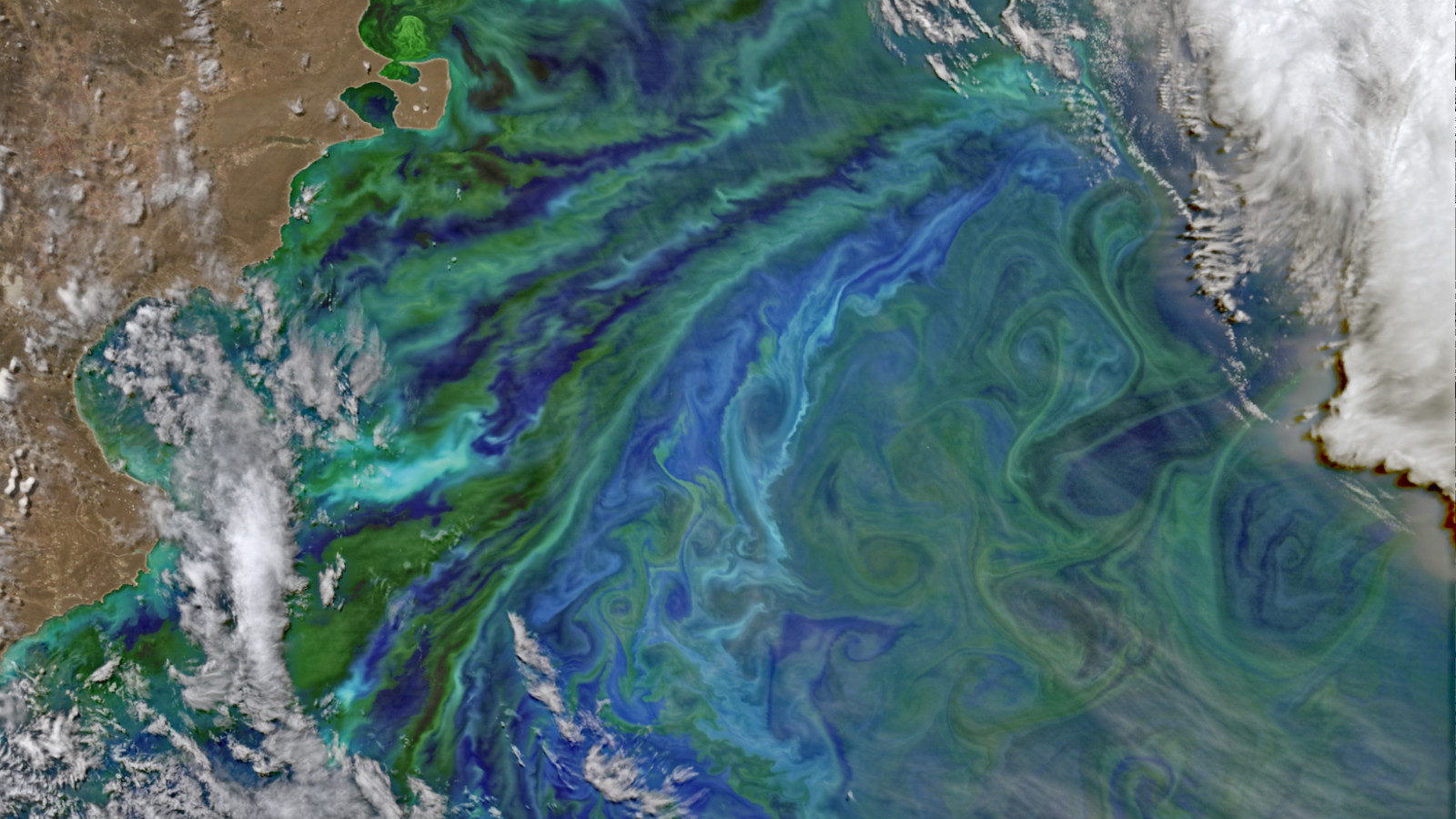
QUICK FACTSWhere is it? The Patagonian Shelf Break, off Argentina.What’s in the photo? A massive phytoplankton bloom.Which satellite took the photo? Suomi National Polar-orbiting Partnership (Suomi NPP).When was it taken? Dec. 2, 2014.This striking satellite photo captures a gigantic phytoplankton bloom painting the sea with a colorful collection of swirls and striations.The brilliant bloom, which appeared between November 2014 and March 2015 off the east coast of Chubut province, Argentina, occurred in a patch of the South Atlantic Ocean known as the Patagonian Shelf Break. When this photo was taken, the rippling mass of algae stretched more than 1,000 miles (1,600 kilometers) across.The Patagonian Shelf Break is one of the world’s most prolific phytoplankton hotspots. During the Southern Hemisphere’s spring and summer, a combination of windblown dust from the mainland, iron-rich ocean currents and the upwelling of cold waters from the deep sea provide the perfect mix of nutrients and conditions for phytoplankton to grow and reproduce, according to NASA’s Earth Observatory.The swirling shapes are caused by spiraling ocean currents known as eddies, and the thicker bands of algae are likely the result of horizontal mixing where patches of warm and cold water collide, according to Earth Observatory.Related: See all the best images of Earth from space This figure shows how phytoplankton blooms grow in the Patagonian Shelf Break during the Southern Hemisphere’s spring and summer. The top row of images shows changes in Chlorophyll abundance and the bottom row shows changes in the levels of organic carbon. (Image credit: Guinder et al. 2024)The photo shows two main types of phytoplankton. Coccolithophores, a group of algae that surround themselves with armor plating made from calcium carbonate, make up the lighter aquamarine swirls, while the darker green patches are a mix of diatoms, dinoflagellates and other species that are rich with the photosynthetic pigment chlorophyll, according to Earth Observatory. (Specific wavelengths of light were enhanced in this photo to differentiate between these types.)The blooming algae provide enough food to support an abundance of marine life and help to remove large amounts of carbon dioxide from the atmosphere via photosynthesis. However, these ecological benefits are now under threat from a hidden side effect of human-caused climate change — ocean acidification.Get the world’s most fascinating discoveries delivered straight to your inbox.A 2018 study published in the Journal of Marine Sciences revealed that the Patagonian Shelf Break is acidifying quicker than the rest of the South Atlantic Ocean as it absorbs CO2 directly at the surface. The increased acidity of the seawater in the area could impact the phytoplankton’s growth rates and nutrient uptake, which would likely reduce the size of the blooms.Ocean acidification could be particularly problematic for coccolithophores because it could weaken their calcium carbonate armor, according to the Australian Academy of Science.
